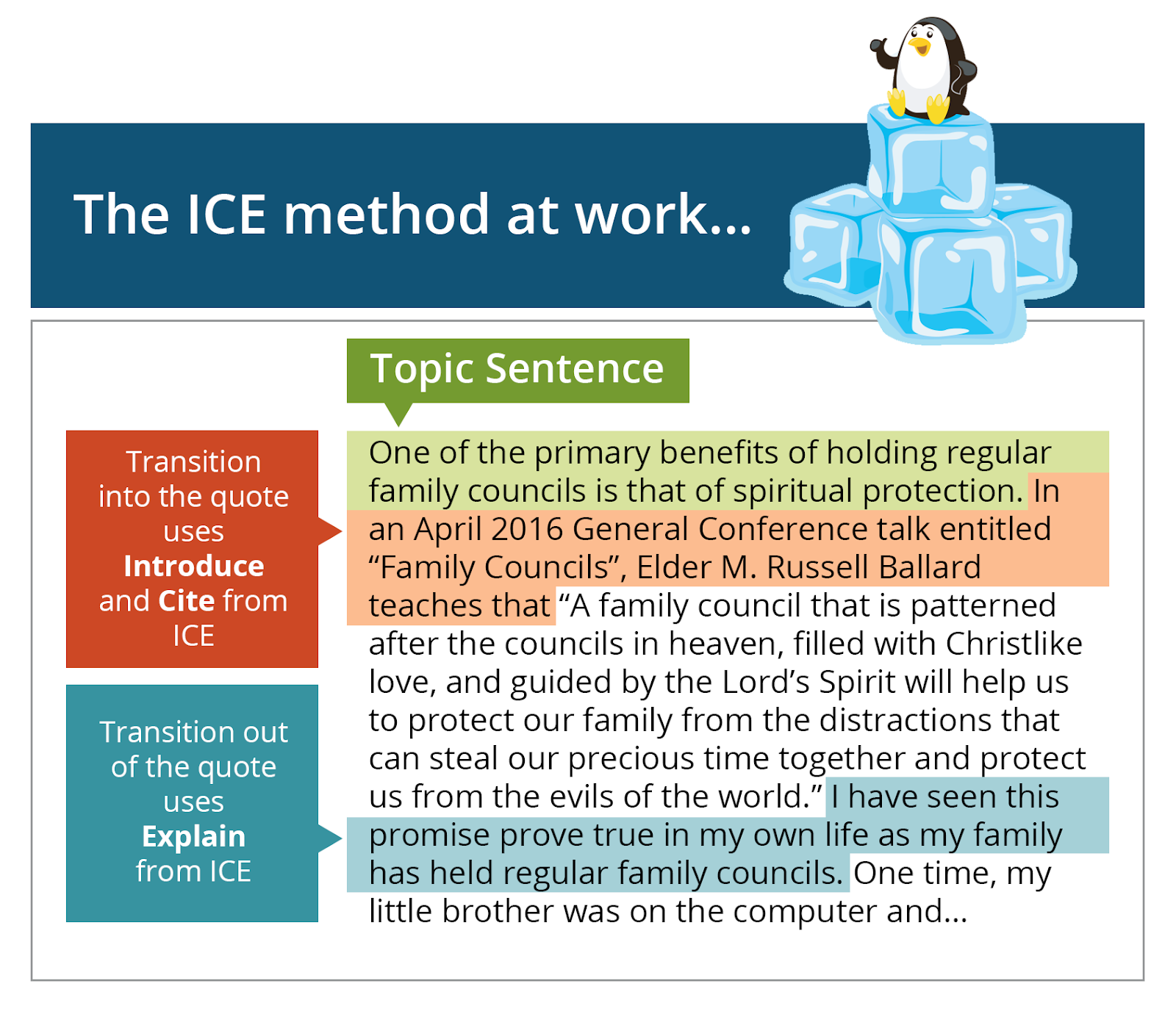Transitions
Within-paragraph Transitions
Within-paragraph transitions tend to serve the purpose of alerting readers to upcoming shifts in perspective or voice. These shifts in perspective can occur in many places throughout the essay, but most often tend to appear during moments of quote integration.
Quote Integration
The Resource Center lesson on Quote Integration teaches that, when introducing the words or ideas of another author, it is important that you let your reader know that those words or ideas are not yours. Doing so will not only prevent you from committing plagiarism— it will also allow you to create an organized and understandable essay. An essay where your thoughts and the thoughts of others are clearly defined and working together to strengthen the overall thesis or argument of the essay.
ICE Method
To review, one of the most effective ways to transition your reader from your own thoughts to the thoughts of another author within a paragraph is to use the ICE Method. As the taught within the Quote Integration lesson, the ICE Method has three basic steps:
- I: Introduce
- C: Cite
- E: Explain
The “I” (Introduce) part of the ICE method is where most of the transitioning takes place. The best way to alert your reader of this kind of shift in perspective and voice is to introduce the source. You do this by ay answering the questions of who, where, and when:
- Who said it (the author)
- Where it was said (in what source it was found)
- When it was said (the general time frame in which it was published)
Consider the following familiar prompt question:
What is a family council and what are two of its benefits?
Imagine for a moment that you did some research and were able to identify two benefits in response to this question— two benefits that will be covered in two separate body paragraphs:
- Spiritual protection
- Unity
Ponder and Record
- What might a transition from your own words to a quote or paraphrase from another person look like within a body paragraph given the two listed benefits?
- How could the ICE method be employed effectively in this situation?
To illustrate how the “I” (Introduce) portion of the ICE method of quote integration serves as a great within-paragraph transition for your reader, read over the example body paragraph topic sentence below:
One of the primary benefits of holding regular family councils is spiritual protection.
How might you transition from your own thoughts (as expressed in the topic sentence above), to another’s thoughts? This is where the power of the ICE method really comes into play. See it at work in the example below:

Ponder and Record
- How could the ICE method help you not just avoid plagiarism, but also implement effective transitions between your own thoughts and ideas and the thoughts of others?
- In what other portions of your essay will you likely need to transition from your own thoughts to the thoughts or ideas of someone else?